












Last Gasps
Paranormal



The South’s science-based team!
Our trained investigators are here to believe you. Most importantly, we are here to solve the problem...no matter what it takes. Our services are always FREE.

© 2023 Last Gasps paranormal. Links | Terms and Conditions







Orbs


One of the greatest false members of the paranormal target hit list is the orb. Most amateur ghost hunters and participants on ghost tours parade photo after photo out showing off their brief encounter with the supernatural. The reality is their encounter is actually with a bug or dust particles.
Written by Kyle T. Cobb, Jr.
Nos tibi credere.
Phenomenon explored
What is an Orb?
Before 1980, orbs were not considered paranormal. The few photographs of self illuminating spheres could easily be identified as ball lighting, possibly Swamp Gas (ignis fatuus), or photographic errors.
In October 1980 the publication of a book called Photographs of the Unknown by Robert Rickard and Richard Kelly featured a number of staged “super natural” photos. While sold as an art book, many in the paranormal community embraced the book as a serious collection of captured images. One of the many types of images contained in the books were orbs created using lens flares and other photographic techniques.
Suddenly, orbs joined the paranormal community as a valid spirit form.
Even with the sudden popularity of orbs, virtually no photos of orbs were captured for the next decade. The few that did emerge are easily explained by various photographic issues including mechanical failure of the camera shutters.
With the introduction of the digital camera in 1991, Kodak brought to market the Kodak DCS-100. Suddenly, early adopters of the digital cameras began report strange anomalies in the photos. Were these orbs some vision into the world of the supernatural? Had Kodak at last crossed the veil into the spirit world?
Much to the disappointment of everyone wanting there to be spirits in their photos, the answer was “NO.”
After extensive research by Kodak and Fuji, there were 4 main causes of “orbs”:
- Bugs
- Dust
- Peripheral light
- Camera failure
One of the key test in debunking 99.9% of orbs is that there fails to be illumination on surrounding objects.
Digital Cameras
Unlike traditional film cameras that rely exclusively on reflected light, digital cameras also rely on a variety of transmitted signals to control things like auto-focus and other automatic settings. Since most of these signals are light based (either visible or infrared) they travel at a constant speed. When the signals intercept an object closer to the camera than the primary target, the reflection of the closer object arrives back into the cameras light sensor before the reflection in a more distant target.


1980 Photographs of the Unknown by Robert Rickard and Richard Kelly
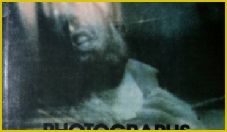
Objects between the camera and the subject
Because the objects are much closer to the camera, they are proportionally much bigger than subject.
Bugs
The most frequently photographed orbs are actually insects and dust particles. Generally speaking, the insects are the culprit in the “zooming” orb photos.
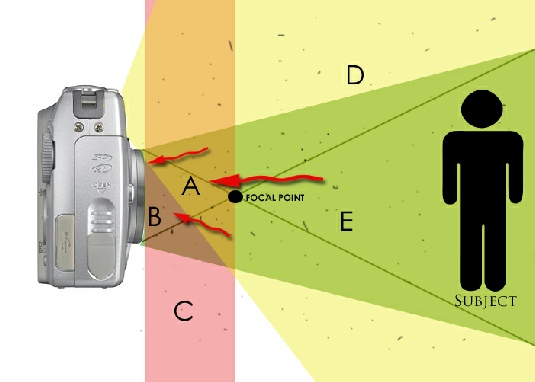
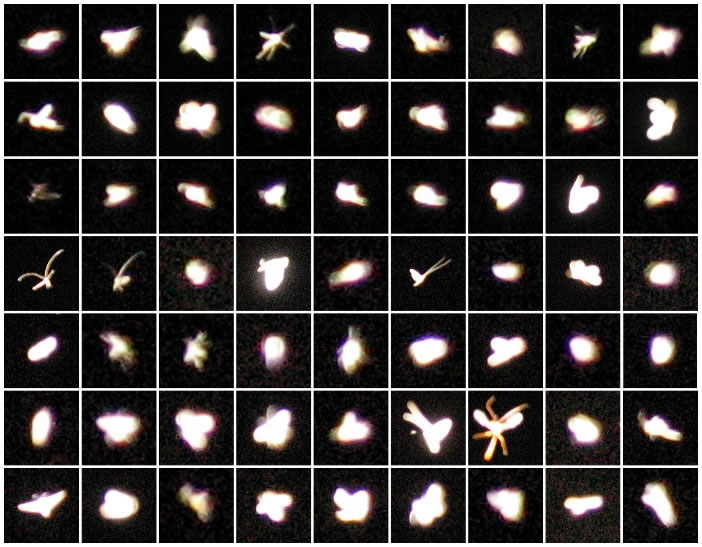
Examples of insects as orbs
Attracted by light of the cameras or just the smell of a nice human meal, cameras frequently capture the high-speed movement of the many insects swarming around us.
Dust
Captured just as frequently as bugs, the dust particle is the also a paranormal star. In the case of dust, these tiny particulates are usually within inches of the camera and are circulated either from movement of the camera owner or wind. Because they are so close to the lens, they appear as giant glowing objects in photos.
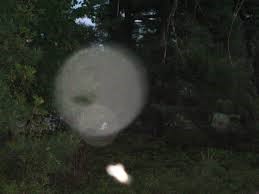
A dust particle and an insect "orb"
While the luminescence of the dust particles may vary, generally they always appear as fuzzy circles.
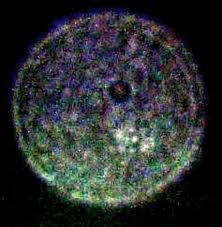
Close up of a dust "orb"
One of the elements that often fool reviewers of orb photographs is the appearance of blur motion. This motion is the by-product of the camera automatically adjusting to low light conditions and increasing the exposure time. Stated another way, the sampling time of the photo is increased.
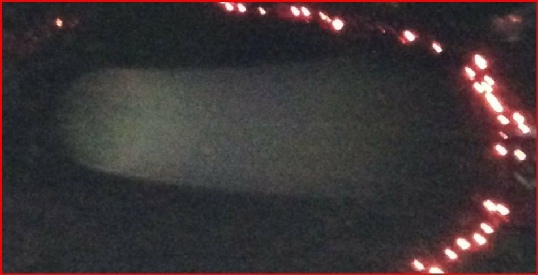
A moving dust "orb"
When the above orb has a saturation filter applied in photo shop, it is possible to see double images of the core as well as the motion blur.
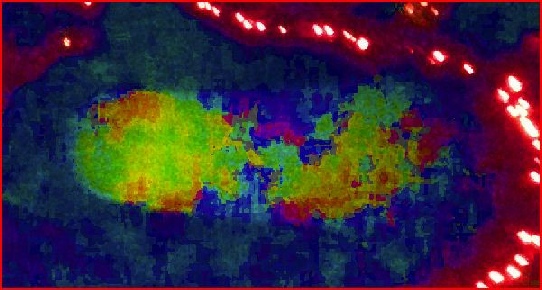
A dust particle with a Photoshop saturation applied
Peripheral Light and camera failure
While dust and bugs cause the vast majority of orbs, camera failure causes a small number. As technology has improved most of these physical factors have been virtually eliminated but when looking at older sources, these may play a factor.
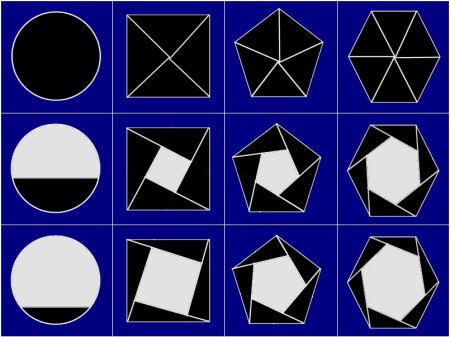
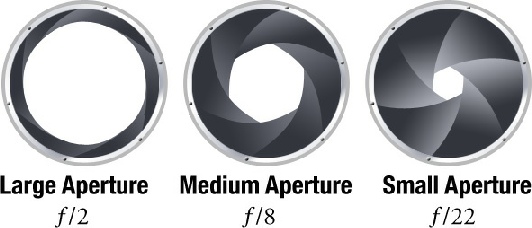
| Paranormal Books |
| Apparitions |
| Cryptids |
| Demons |
| Orbs |
| Poltergiest |
| Residual Hauntings |
| Shadow People |
| West Demons |
| Ouija and Zozo |
| Exorcisms |
| Anneliese Michel |
| Ronald Hunkeler |
| Anna Ecklund |
| LaToya Ammons |
| George Lukins |
| Christian Demon texts |
| Roman Rite 1614 |
| Roman Rite 1998 |
| Eastern Demons |
| FAQ |